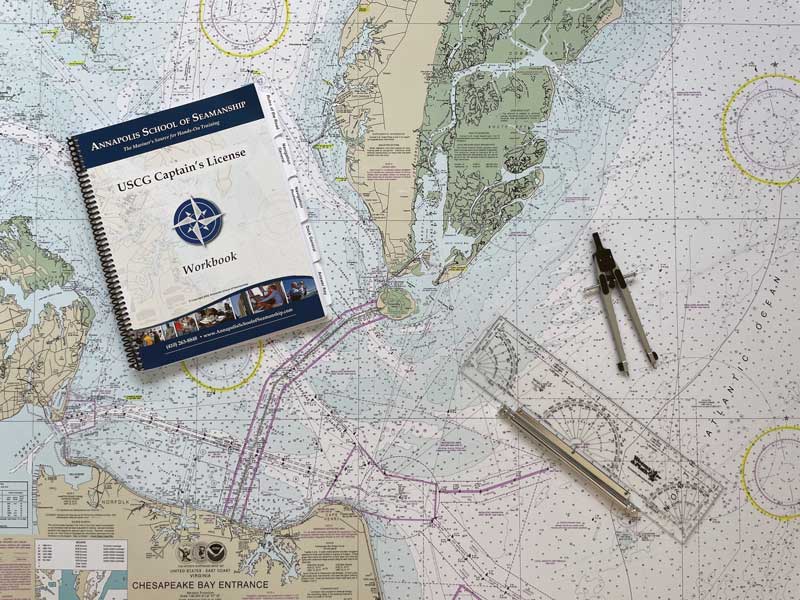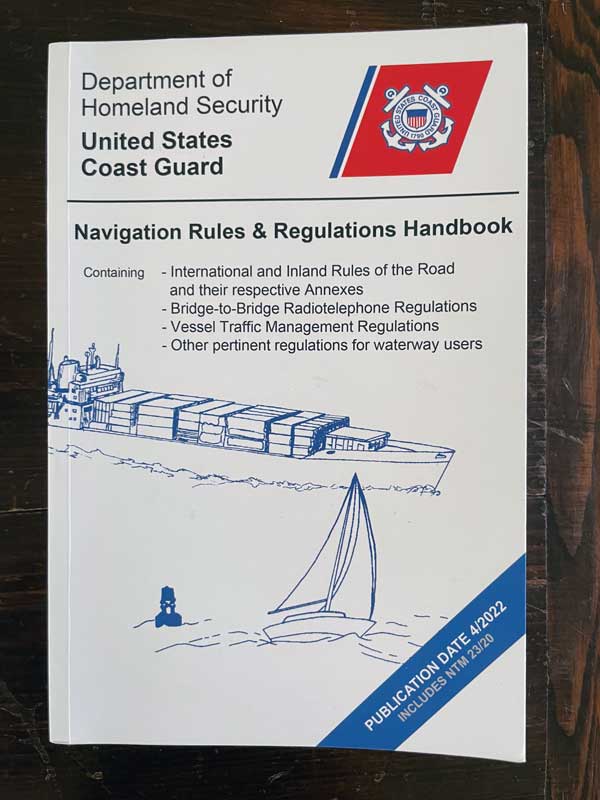In parts one and two of this captain's license series, captains delved into why you might want to get your license, the different types of licenses, and how to find work once you have one, but what is the process actually like? Luckily for you, I took my captain’s course at the Annapolis School of Seamanship this past April, so I have the inside scoop.

I’ve wanted to get my license for a while. I know lots of people who have theirs, and it seemed like the obvious next step in my boating career, regardless of what part of the industry I end up in. Mostly, however, I wanted some credibility. As a 23-year-old woman, my lack of certifications attesting to my boating experience was starting to become a hurdle, and I hoped that a license might help.
As previously mentioned in this series, amassing sea time is a huge part of getting a license. For the OUPV “6-pack” license and Inland Master’s licenses, that’s 360 days on the water, and for Near Coastal Master’s licenses, it’s 720. Luckily, as a boat owner myself and the daughter of a boating family, I acquired that time naturally over the years, meaning that the biggest step I had to take was the class itself.
The Coast Guard requires you to pass a series of multiple-choice exams, and just because you have a lifetime of boating experience does not mean that you can pass them without studying. There are both online and in-person classes available from a wide variety of schools, but the value of the in-person classes cannot be overstated. Although in-person classes are definitely more expensive than online classes, some of the skills required are hands-on and some of the concepts are a bit foreign, so having an expert instructor to guide you makes the learning process significantly easier.

I took Annapolis School of Seamanship’s seven-day OUPV course. This was a fast-paced class, and we met every day from 8 a.m. to 5 p.m., followed by several hours of studying each night. All materials were included in the course, so all I had to bring was a notebook and pencil.
On day one, the instructor clarified a lot of the ins and outs of the license itself and differences between licenses. Given how difficult it is to get a straight answer from the internet to most basic questions about captain’s licenses, this was incredibly helpful. Then we launched right into “rules of the road,” the content of the first of four exams we took on the last day. Rules of the road include both inland and international regulations governing navigation lights, sound signals, and right of way. Learning these rules is mostly memorization, but the instructor provided some tools and mnemonic devices to help. That first day was a bit overwhelming with the sheer amount of information received at once, but with the recommended studying and good old-fashioned repeated copying, I had the rules down by exam day.
By day three, we moved on to navigation problems, the content of the second exam. Each student had their own paper chart, dividers, and parallel rulers, and we learned how to account for compass error, plot coordinates, find three-bearing fixes and running fixes, calculate precise ETAs, and decipher every symbol. We also learned how to use other publications, like NOAA’s Coast Pilot and tide and current tables. The concepts behind navigation problems aren’t complex, and the math never gets beyond addition, subtraction, multiplication, and division, but precision and attention to detail are key.

By day five, we had spent most of our time on navigation problems and reviewing rules of the road. Interspersed was content from the last two exams: navigation general and deck general. The majority of the class is focused on the first two topics because experienced boaters likely already know much of what is tested on the navigation general and deck general exams. Plus, you only need a 70 percent to pass those two while you need a 90 percent to pass the first two. Navigation general includes topics such as the functions of various electronic navigation tools, deciphering weather, and different types of compasses, while deck general covers everything from the parts of a boat to knots, discharge regulations, and basic firefighting.
On day six, we took a full practice exam with all four parts, which was an older version of the real thing, and reviewed our answers in class. On the last day, we took the final exams. We had three hours to complete each of the four exams, but it took most people far less time than that, and we knew whether or not we had passed that same day. If the exams don’t go your way, you can retake any of the four exams up to three times, and the school offers private tutoring if you need it.
I opted to upgrade my OUPV license to a Master’s license with a Sailing Auxiliary endorsement at the same time, to avoid submitting paperwork twice. Annapolis School of Seamanship offers both the upgrade and sailing endorsement classes, so I registered for them at the same time as signing up for the OUPV class. The upgrade to Master’s exam consisted of one additional deck general test, and the sailing endorsement was an additional short test. After completing the three classes, I walked out with three certificates attesting to my completion of the courses and exams, and a checklist for my next steps.

As I write this, I am gathering letters from previous employers attesting to my sea time and filling out forms to vouch for time aboard my own boat. I recently went in for my physical exam and drug test, which mostly consisted of checking my vision, hearing, and mobility, and discussing any preexisting conditions that might preclude me from the duties required of a captain. It took about an hour and cost me a couple hundred dollars.
Next, I’ll have to go in to get my TWIC card, or Transportation Worker Identification Credential, which is issued by the TSA. Making the appointment online took 10 minutes, and when I go in, I’ll get fingerprinted and background checked for another $100 or so. As a bonus, I’ll get free TSA pre-check at the airport!
Lastly, I’ll sign an oath in the presence of a notary and send all of these forms, in addition to proof of my citizenship and First Aid, CPR, and AED certification, back to the Annapolis School of Seamanship. They will review my full application package for errors and submit it to the Coast Guard on my behalf. The Coast Guard will review my application and, based on the sea time that I submit, (hopefully) offer me a license of a rating they deem appropriate.
One of my main takeaways from this process is probably one that anyone who’s done it will echo: it’s simply a lot of paperwork. Calling offices, scheduling appointments, filling out forms, and collecting signatures is the bulk of the work once the class and exams are done. And while I’m not sure whether I will ever need to identify the difference between a tug with a 100-meter tow from a tug with a 200-meter tow solely from its navigation lights (I’ll avoid it regardless), or plot a running fix underway (I hope my navigation electronics never fail to that degree), there is some comfort in knowing I can. When my license comes in the mail, it will be a piece of paper that not only demonstrates my knowledge, experience, and capability to others, but also confirms it for myself.
By Kelsey Bonham